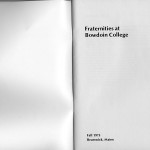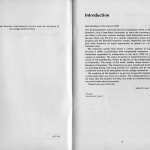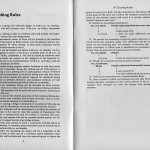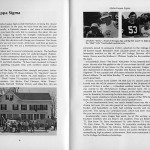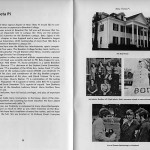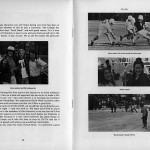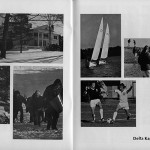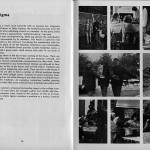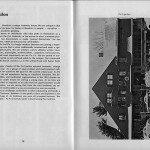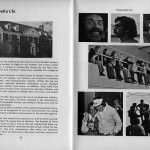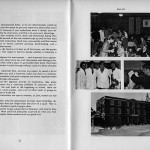Bowdoin’s Interfraternity Council issued annual rush booklets (Document SS, 50), which served as an introduction to the college’s fraternities. After an introduction and some rules, the booklets gave individual fraternities the opportunity to describe themselves to the students. Most of these features are about three paragraphs in length. John Cross ’76, the then Interfraternity Council president, wrote the introduction to the fall ’75 rush book, in which he states, “The image of small, snobby clique does not apply to Bowdoin’s fraternities.” This blanket statement of inclusivity is interesting as, in 1975, women were still quite new to the college.
By 1975 the fraternities as a whole were not single-minded in their approach to women. The institutions range from praising themselves on remaining single-sex (Alpha Kappa Sigma), to devoting several sentences to women and stating that women could live in the fraternity houses and be full members (Delta Sigma). Most fraternities fell somewhere in between. Most felt the need to mention women in their profiles, but would not grant them full membership. They limited women to social membership, which meant that they could engage fully in social activities associated with the fraternities. Social members typically did not live in the fraternity houses and were not permitted to vote on fraternity matters. The way these fraternities addressed women shows that the Bowdoin social scene, in which fraternities predominated, still did not grant women the same privileges as it did men.

